3. DRF 认证
Django DRF 认证
1. 使用
1.1 设置认证全局变量
在settings.py添加如下代码
REST_FRAMEWORK = {
"DEFAULT_AUTHENTICATION_CLASSES": ['utils.auth.Myauth']
}
1.2 为方法单独设置认证
views.py中添加 authentication_classes = [Myauth]
from utils.auth import Myauth
class Home2(APIView):
authentication_classes = [Myauth]
def get(self, reqeust):
return JsonResponse({"status": True, 'data': 'OK'})
def post(self, request):
return JsonResponse({"status": True, 'data': 'OK'})
1.3 编写认证类
from rest_framework.authentication import BaseAuthentication
from rest_framework.exceptions import AuthenticationFailed
import json
class Myauth(BaseAuthentication):
def authenticate(self, request):
raise AuthenticationFailed({'status': False, 'detail': '登陆失败'})
1.4 案例
认证类会校验请求体中有没有token
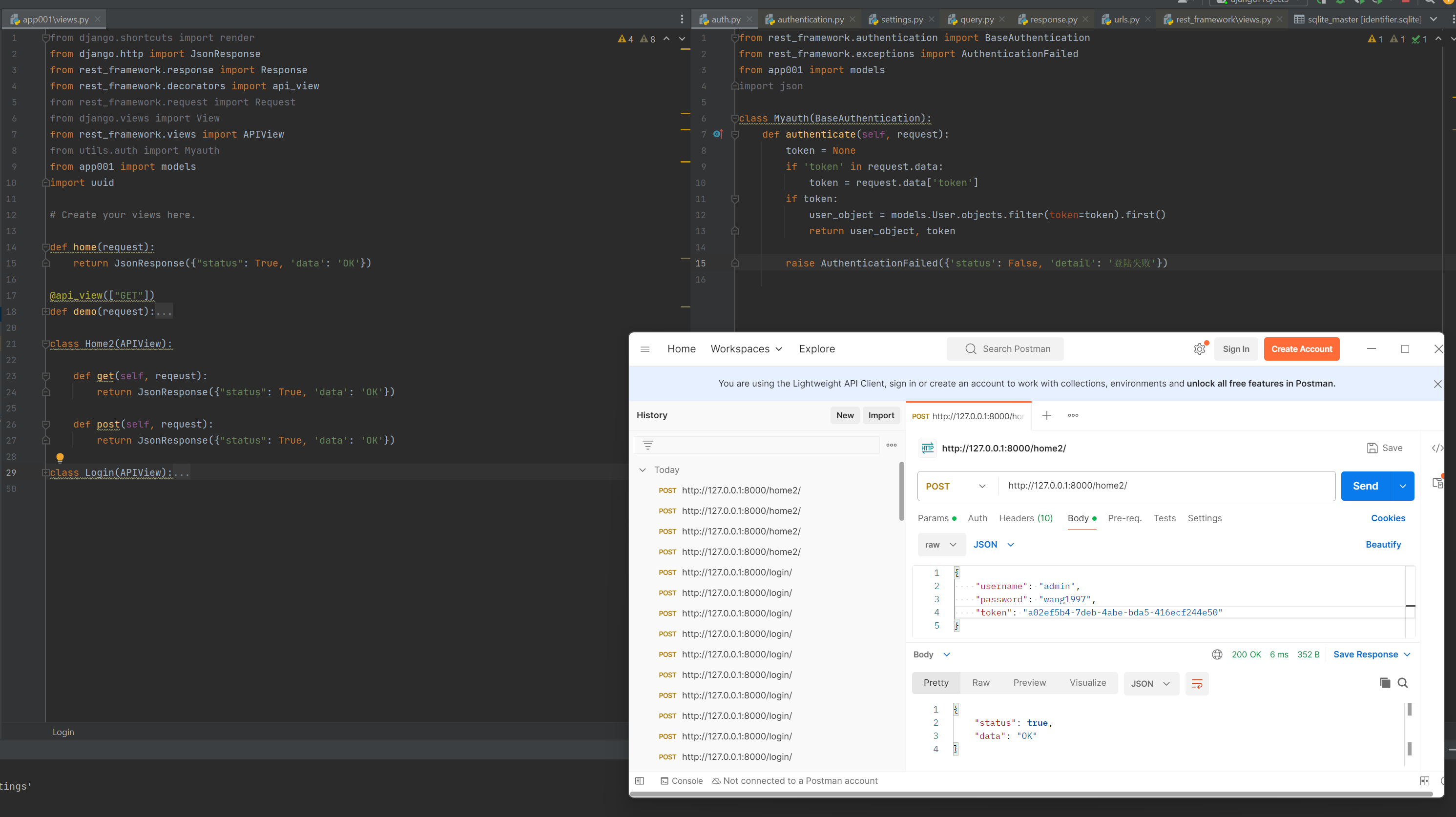
2. 源码流程
上篇讲到所有通过drf的请求都会走到APIView,
执行时会执行这段代码
authentication_classes = api_settings.DEFAULT_AUTHENTICATION_CLASSES
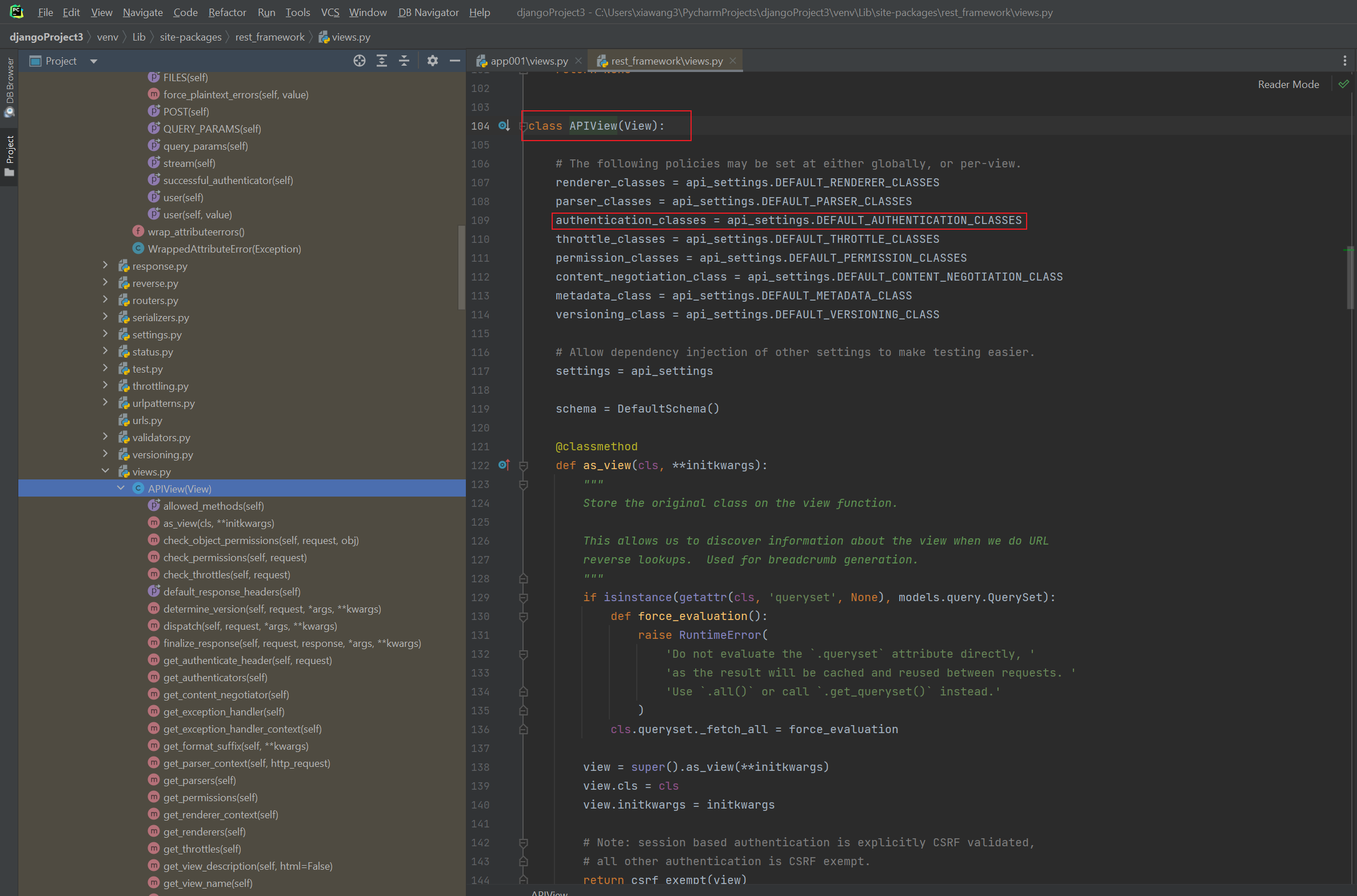
因为api_settings类中没有定义DEFAULT_AUTHENTICATION_CLASSES,
所以执行api_settings.DEFAULT_AUTHENTICATION_CLASSES会走到APISetting类中的__getattr__方法
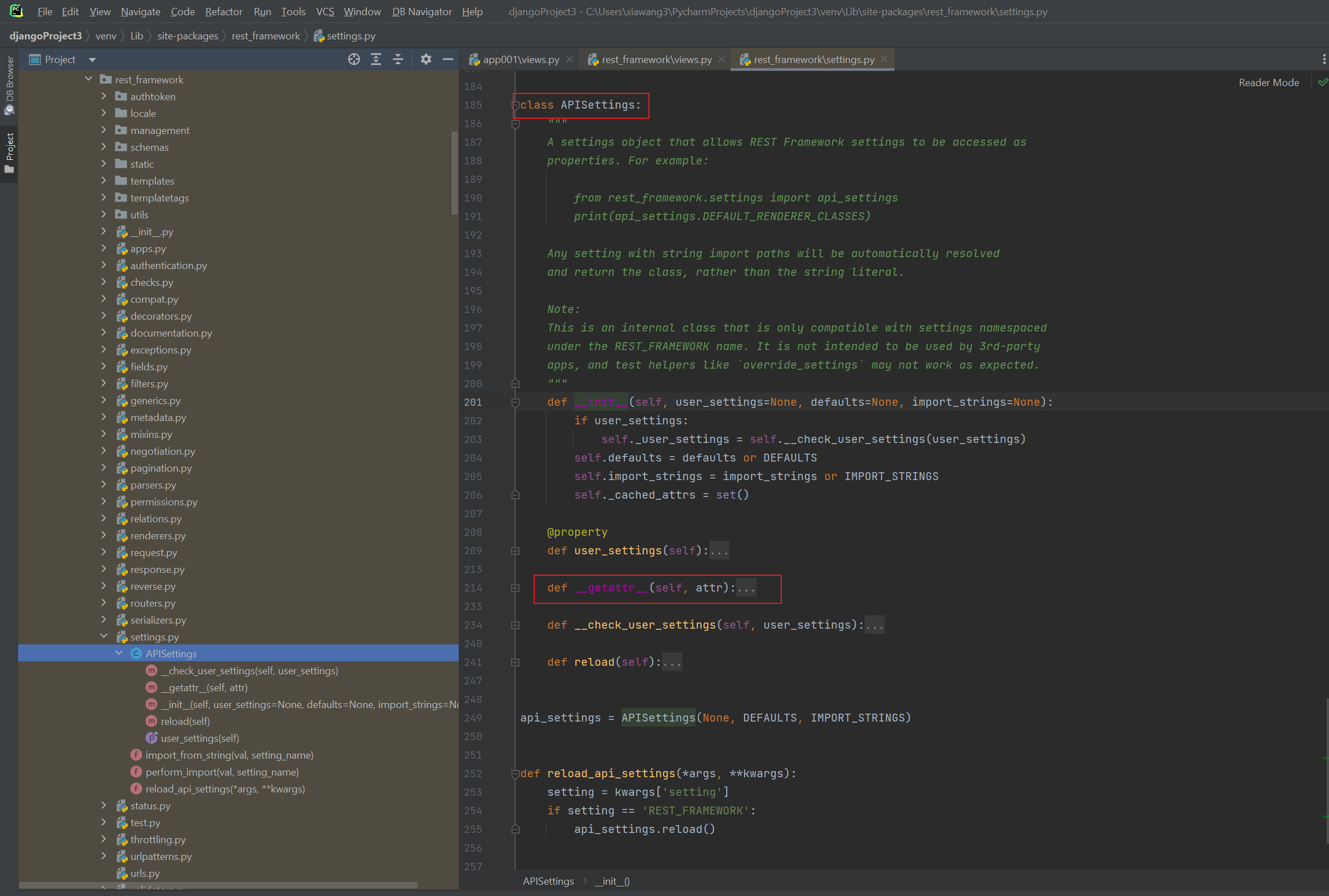
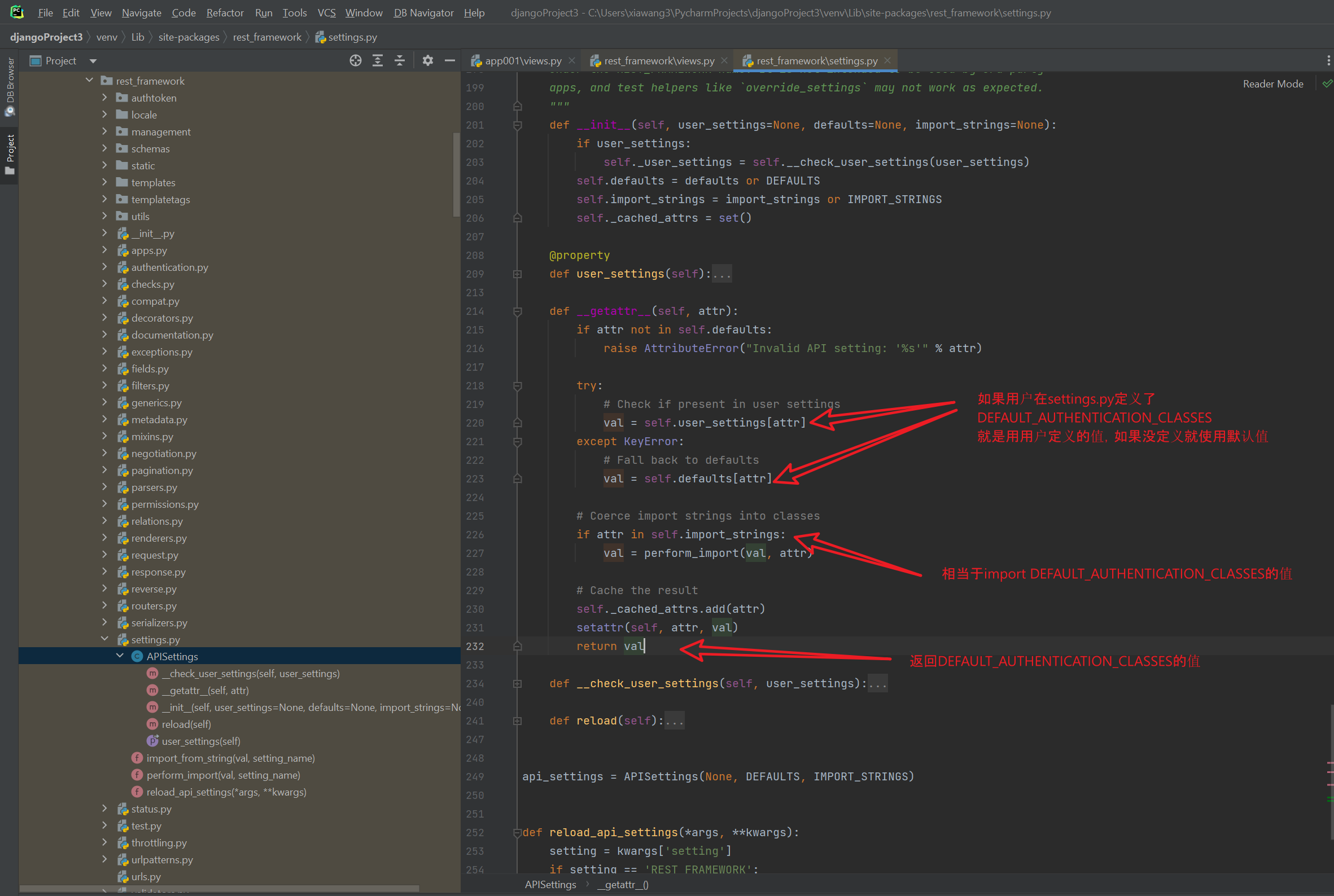
所以authentication_classes 如果用户定义就使用定义的值 要么就使用默认值
往下走到了drf中views.py的dispatch方法
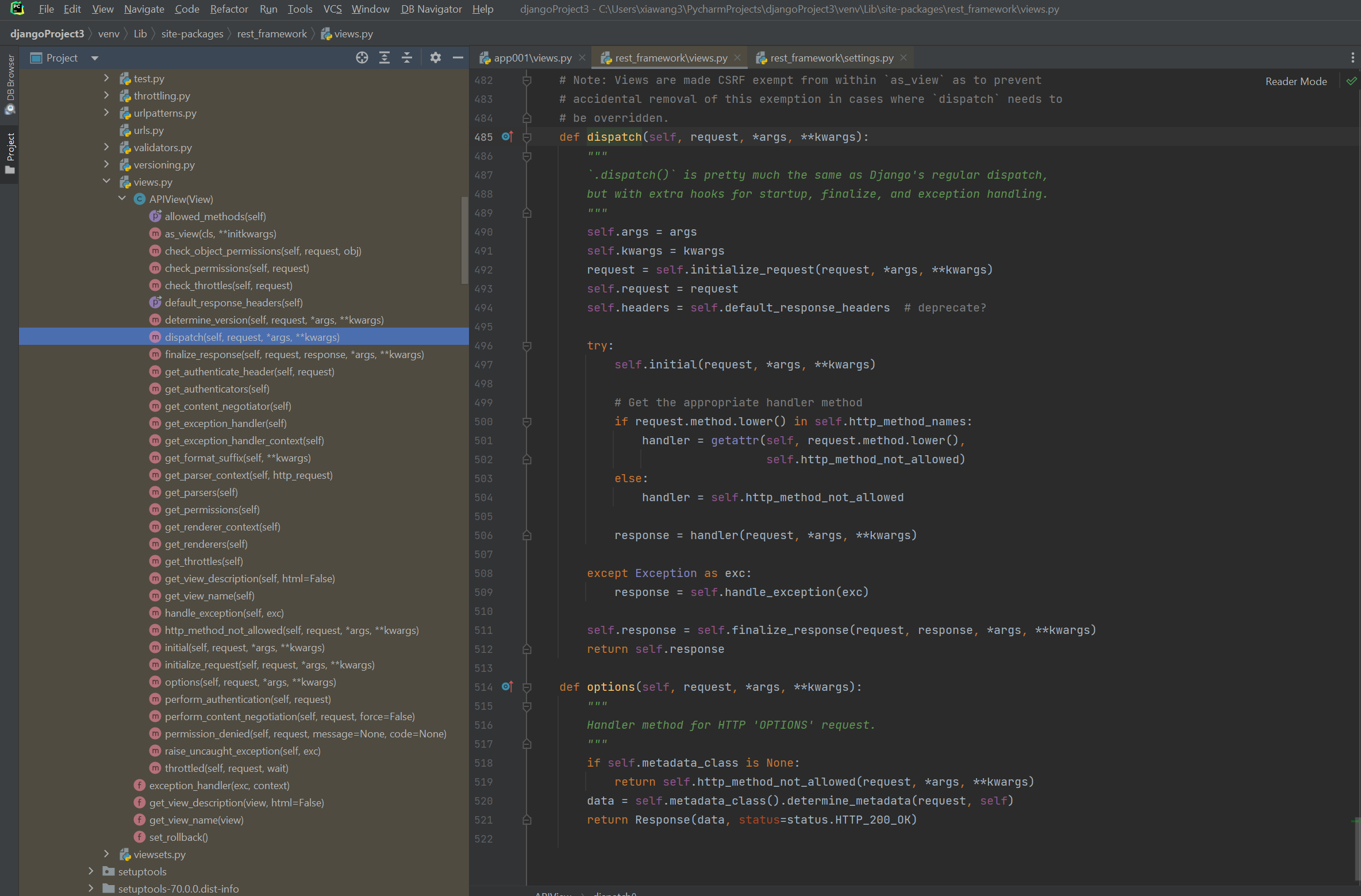
精简代码, 进入self.initialize_request看发生了什么
def dispatch(self, request, *args, **kwargs):
request = self.initialize_request(request, *args, **kwargs)
try:
self.initial(request, *args, **kwargs)
handler = getattr(self, request.method.lower(),
self.http_method_not_allowed)
handler = self.http_method_not_allowed
现在知道了drf生成的新request里封装了 authenticators = [将每个authticator实例化]



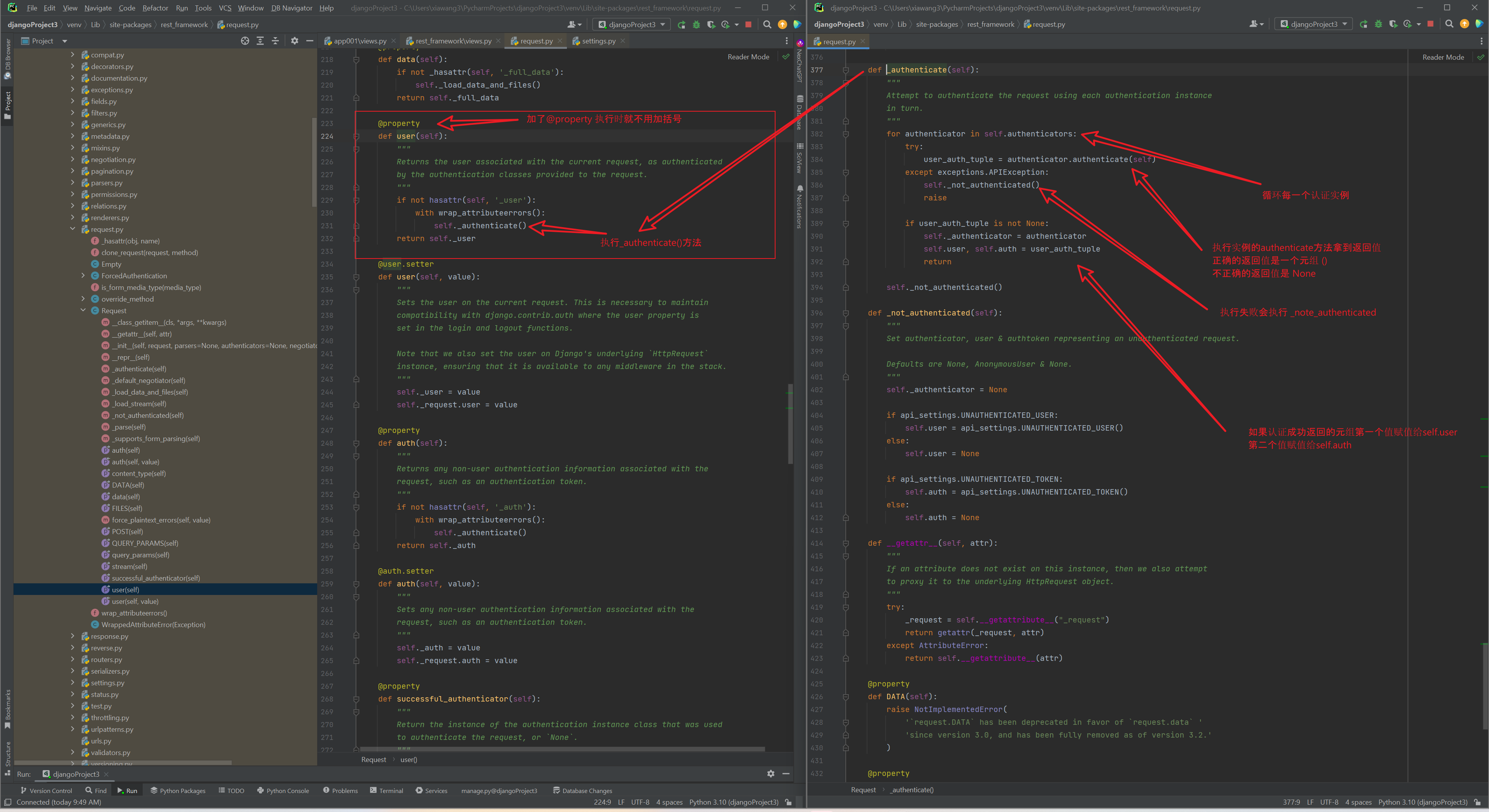
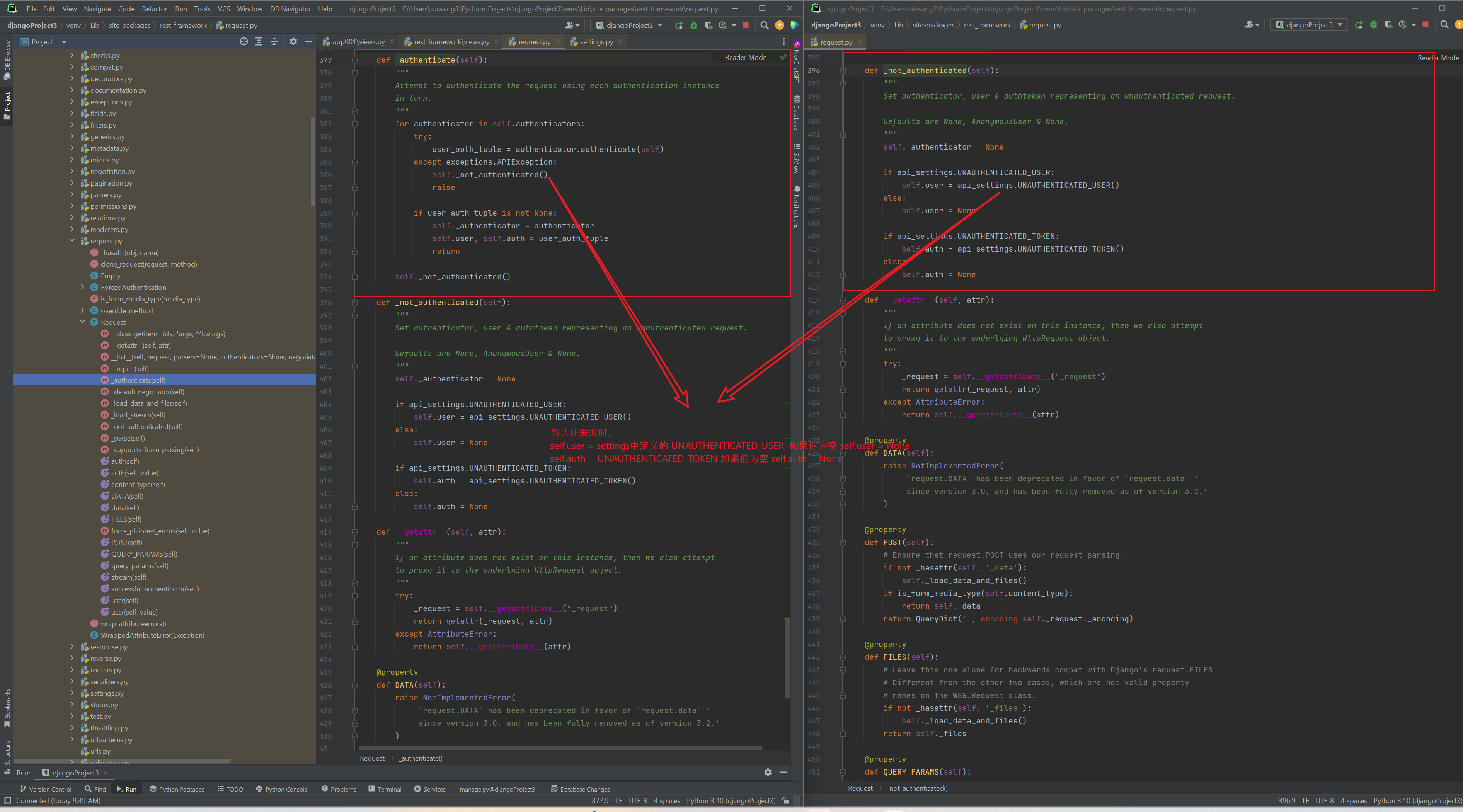
以上就是 DRF 认证功能的全部内容


